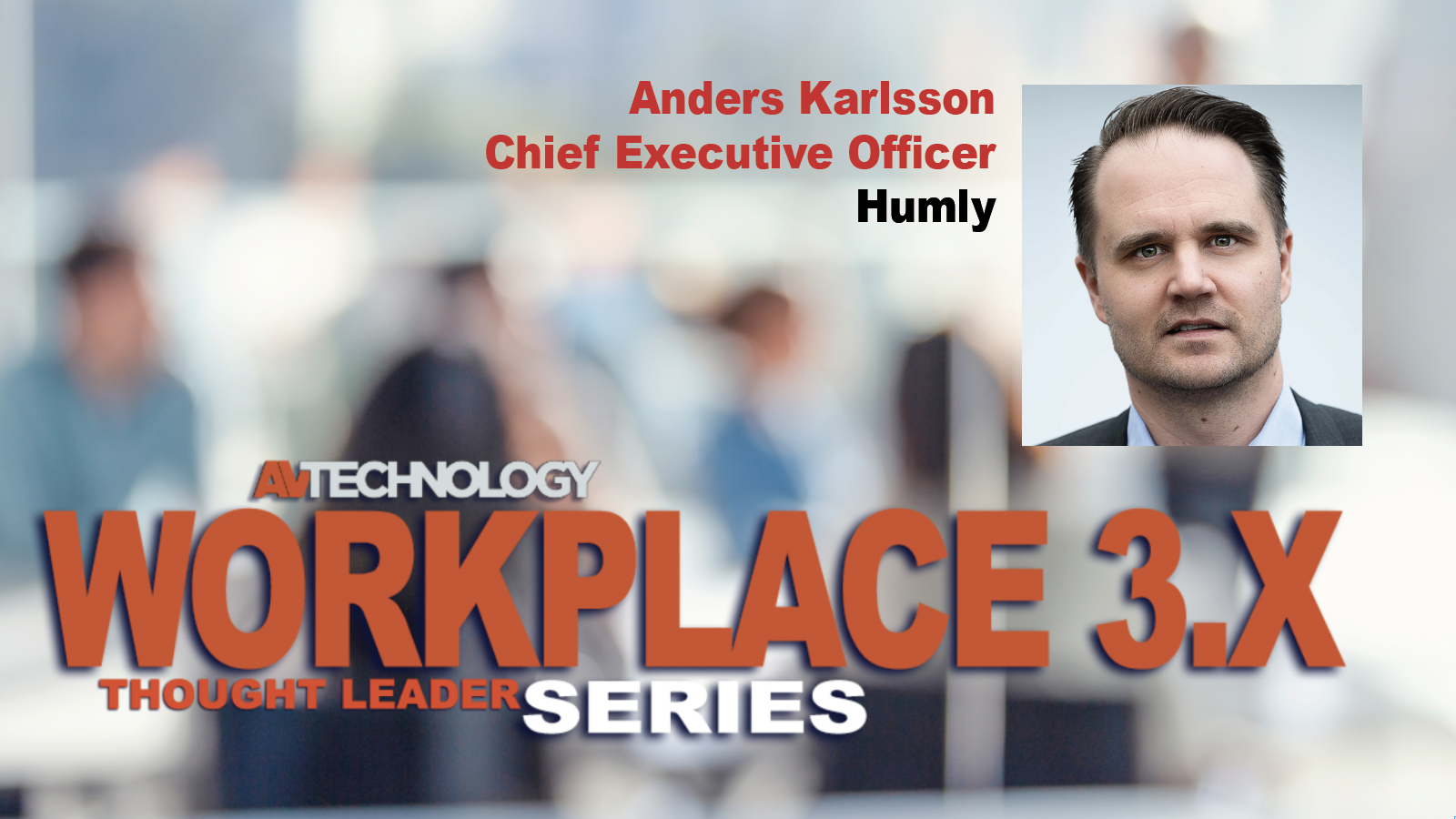
AVT Question: Please share insight and best practices for ensuring meeting equity for all employees and how to deliver the best collaboration experience regardless of location.
Thought Leader: Anders Karlsson, Chief Executive Officer at Humly
Companies of all sizes have returned to a vastly changed workplace. Most employers have adopted hybrid schedules that split the workweek between the office and the home. The office is now primarily a place for collaboration, and schedules often align to bring specific people and teams together on the same days to inspire production through collaborative activities.
The technology infrastructure is undergoing a transformation to support these changes. We see more interactive whiteboards and UC platforms that strengthen collaboration between workers both on and off the physical premises. On the physical premises, the hybrid lifestyle has increased the demand to book meeting and gathering spaces. That higher demand can increase frustration amongst workers limited by meeting room availability. The result is a gradual rise in tension that reverberates through the modern workplace—an altered environment that workers are still learning to navigate.
There are the newfound challenges of moving between desks due to shifting schedules. These changes require innovative hardware and software solutions that help people book spaces well in advance, notify remote workers of meeting room locations, notify workers of available desks, and ultimately bring harmony to the modern workplace." —Anders Karlsson, Chief Executive Officer at Humly
Humly’s core mission has always been to create solutions that establish harmony in the workplace, from accommodating visitors with check-in and wayfinding systems to helping workers schedule meetings with networked solutions. That mission now places a stronger emphasis on reducing friction points created by the new dynamics of hybrid work schedules. The traditional five-day work schedule required minimal coordination between colleagues. Everyone was at the office, and workers were generally aware of meeting schedules and room availability.
That tradition has faded with hybrid schedules. Often, businesses staff heavily mid-week, and finding a space to gather on short notice is difficult. The most well-planned hybrid schedules won’t guarantee all colleagues will be on premises for a meeting. There are the newfound challenges of moving between desks due to shifting schedules. These changes require innovative hardware and software solutions that help people book spaces well in advance, notify remote workers of meeting room locations, notify workers of available desks, and ultimately bring harmony to the modern workplace.







